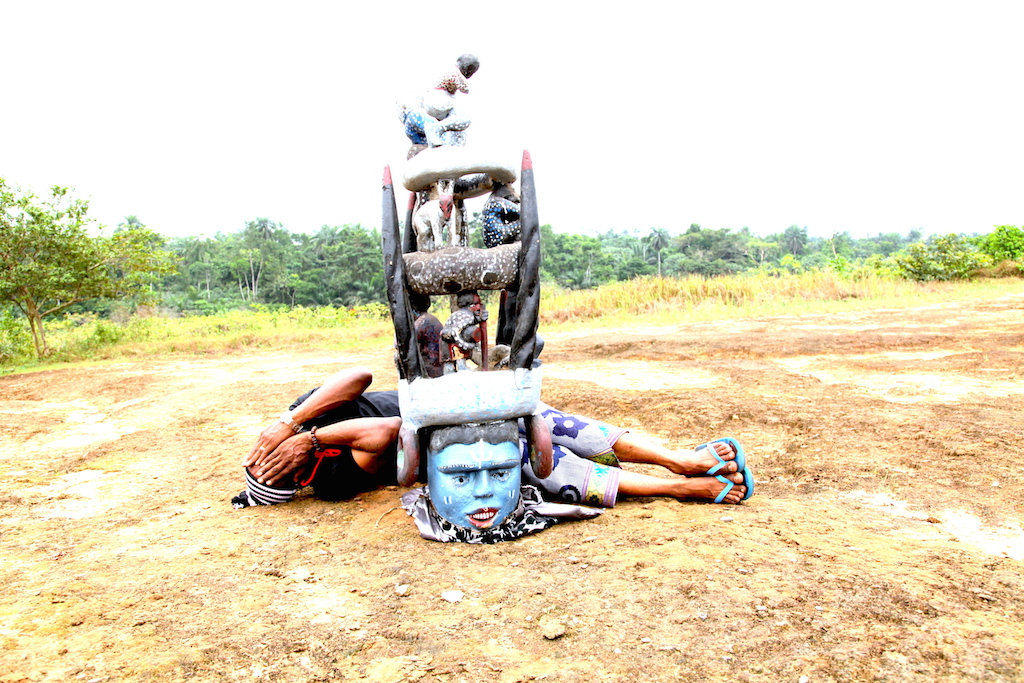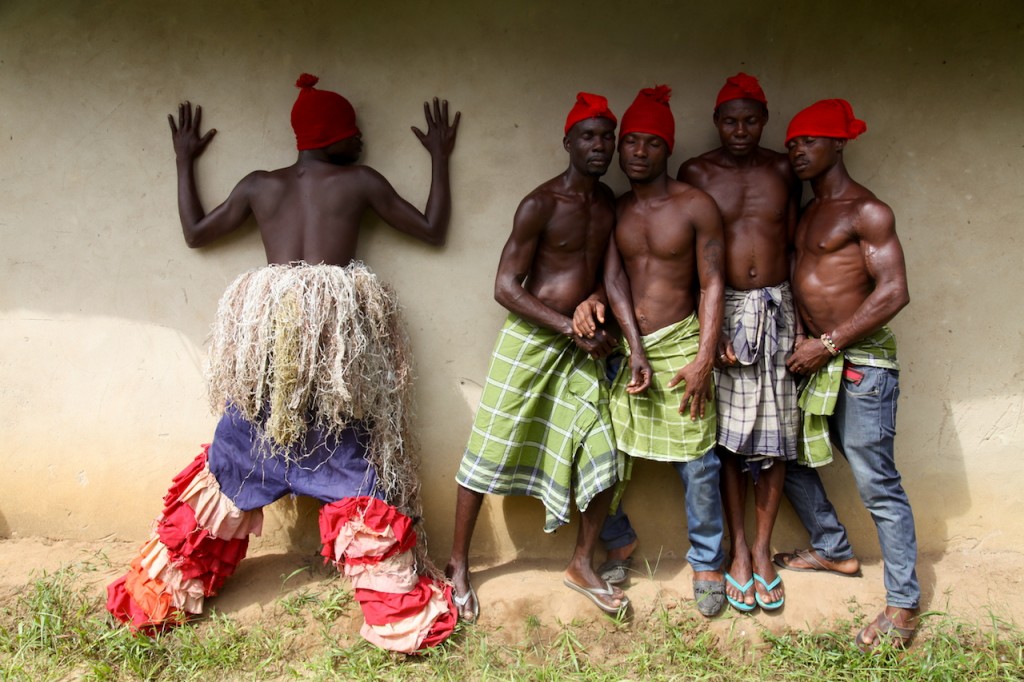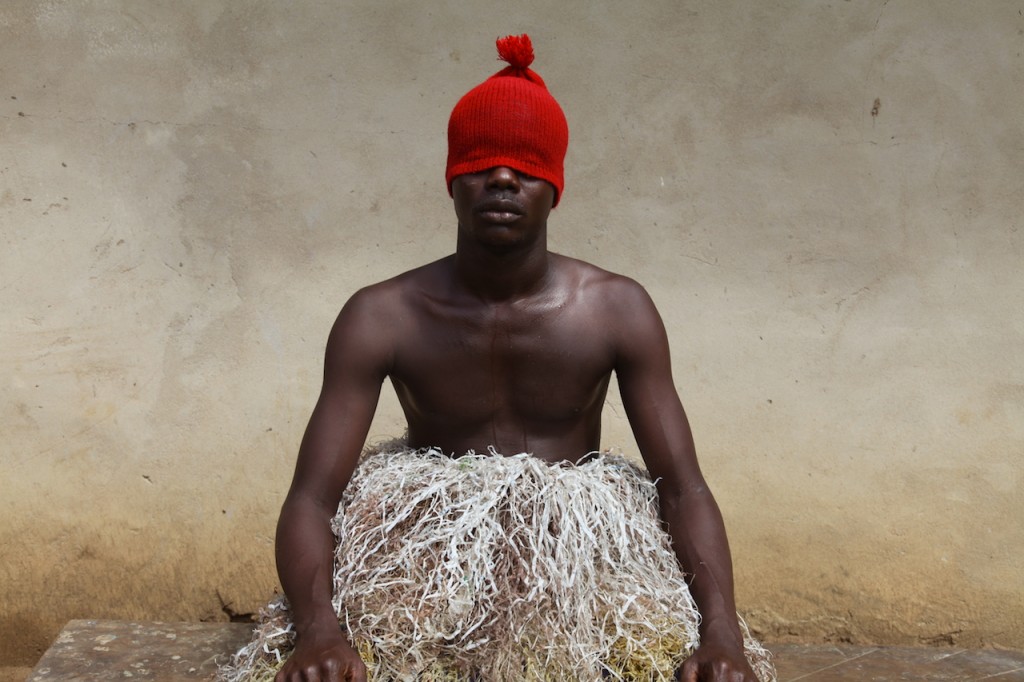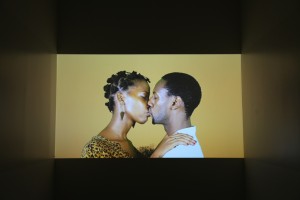
Zina Sar-Wiwa recently founded The Boys’ Quarters Project Space in Port Harcourt, in the old office building of her late father. He was hanged in 1995 by the military regime in Nigeria.
About:
Zina Saro-Wiwa is a video artist and film-maker. She makes video installations, documentaries, photographs and experimental films. She currently lives and works in the Niger Delta in Nigeria, where she is making new work for two museum shows and where she has set up her own pop-up, artist-run art gallery called Boys’ Quarters Project Space, in the city of Port Harcourt.
Her current interest lies in mapping emotional landscapes. She often explores highly personal experiences, carefully recording their choreography. She seeks to make tangible the space between internal experience and outward performance and brings cross-cultural considerations to bear on these articulations. The slippery dynamics between “truth” , “reality” and “performance” lie at the heart of her video performance work.
Saro-Wiwa’s first foray into the art world was in 2008 when her documentary This Is My Africa was shown at Stevenson Gallery in Cape Town. The film went on to be shown on HBO from 2010 to 2012. In 2010 her career as an artist began in earnest in New York, when she was invited to curate her first ever contemporary art exhibition at SoHo’s, now disbanded, Location One Gallery. The group show – titled Sharon Stone in Abuja – was one that explored the narrative and visual conventions of the Nollywood film industry. In addition to co-curating the show, Saro-Wiwa created and contributed her first-ever installation pieces and experimental alt-Nollywood films. Since her New York debut she has been commissioned by the Menil Collection, Seattle Art Museum and the New York Times and has had work shown at the Pulitzer Foundation, Moderna Museet in Stockholm, Stevenson Gallery, Goodman Gallery and other institutions.
“My art career started when I left my journalism background and dedicated myself to changing the way the world saw Africa. I set up the (now dormant) organisation AfricaLab to this end. By immersing myself fully in this endeavour, I discovered that contemporary art practises would give me the power, license and freedom I needed. Art challenged me to be freer and deeper in my thinking. What I did not expect, however, was how focusing in on Africa has often resulted in work that transcended the “idea of Africa” and became deeply personal. And really it is the relationship between the personal and the political that interests me.”
Eaten by the Heart, 2013 (video-installation)
Eaten by the Heart, 2013 (video-installation).
The video performance aspect of the Eaten By The Heart series is represented by a 62-minute film featuring 12 different African and diasporic couples kissing for between 4 and 7 minutes each. Each couple is super-imposed onto a block colour and each kissing performance features its own individual soundscape.
Half the couples are, in fact, strangers. Kissing is a form of intimacy that is common in the West and among Europeans but poses problems to many other cultures including African ones.

Grave, 2014 (Men of the Ogele)
 Hope, 2014 (Men of the Ogele).
Hope, 2014 (Men of the Ogele).
 Missed, 2014 (Men of the Ogele).
Missed, 2014 (Men of the Ogele).
Men of the Ogele is a photographic series by Zina Saro-Wiwa taken in Ogoniland. Located in Nigeria’s Niger Delta region, an hour or so East of the city of Port Harcourt, Ogoniland is a rural area consisting of six kingdoms and 111 villages. Like many parts of rural Africa, it has it own masquerading culture. Most masquerades were created far in the past before anyone can remember when or how they emerged.
 Mourning, 2011, Single channel video, 11mins 37secs.
Mourning, 2011, Single channel video, 11mins 37secs.
In 2011, Zina went on to make Sarogua Mourning, a video installation that confronted her inability to mourn her father’s death and explored her dissatisfaction with the Western mourning rites she found herself having to draw on


